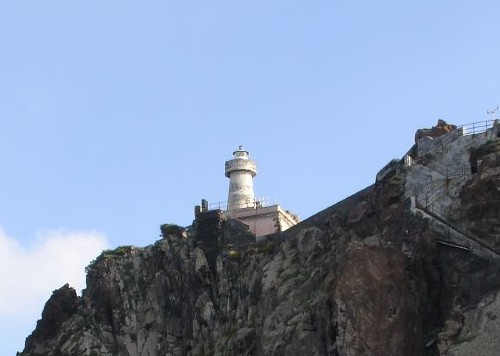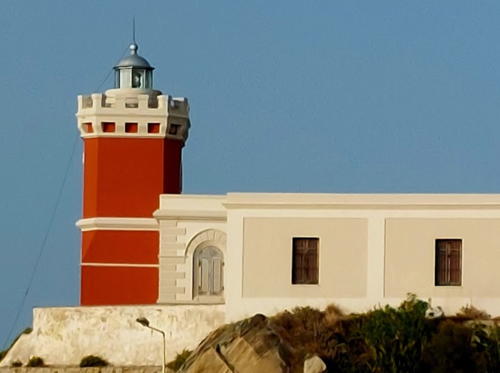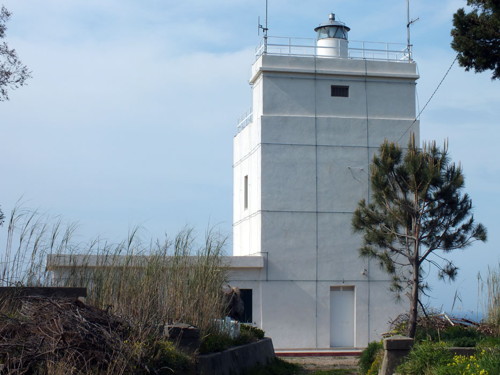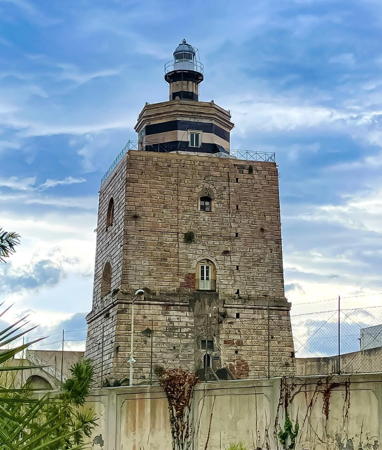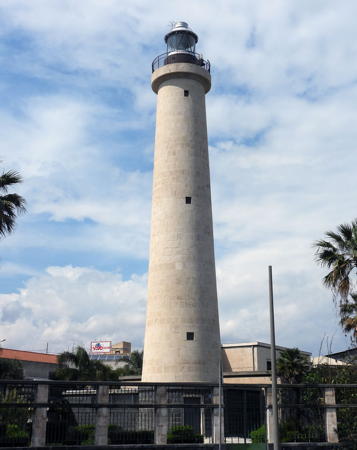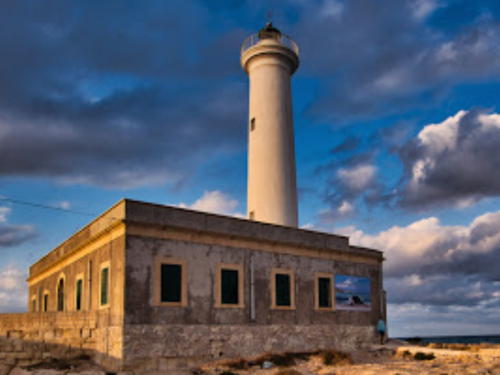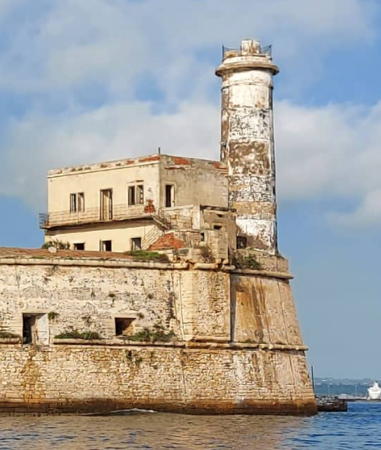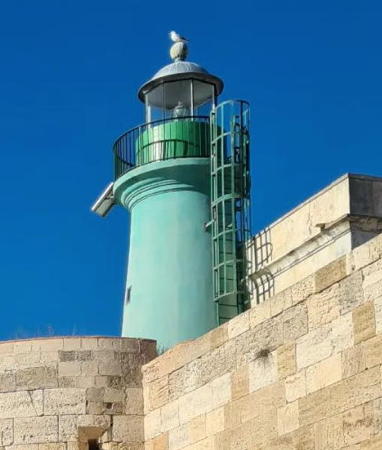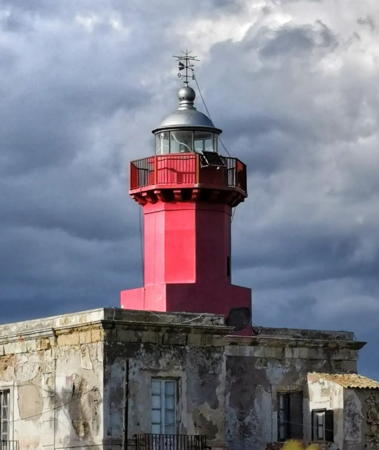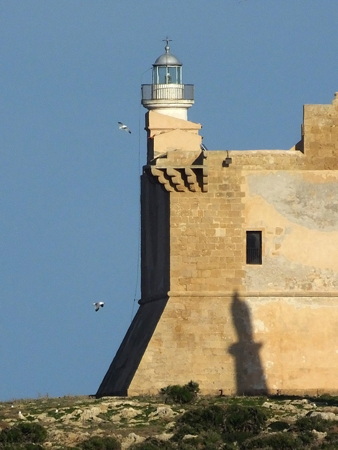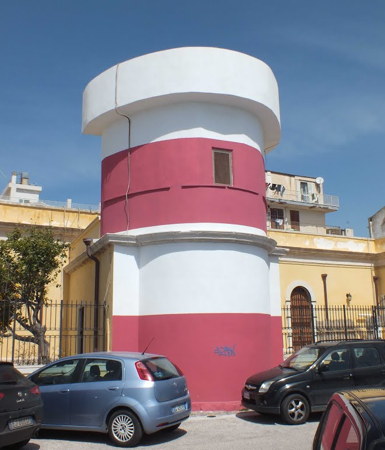Most of Italy (officially the Italian Republic, Repubblica Italiana in Italian) occupies a long peninsula in the Mediterranean Sea, with the Adriatic and Ionian Seas on the east and the Ligurian and Tyrrhenian Seas to the west; the country also includes the Mediterranean's two largest islands, Sicily and Sardinia, and many smaller islands. With this geography Italy has a very long coastline reckoned by geographers at about 7600 km (4722 mi). Guarding this coast are many lighthouses; the Directory lists more than 400.
Italy is divided into 20 regions (regioni), many of them well known outside the country in their own right. The largest island in the Mediterranean, the region of Sicily is separated from the tip of the Italian peninsula by the narrow Strait of Messina. Known as Sicilia in Italian, the island has an ancient history and has had many rulers. The Kingdom of Sicily persisted through many wars and conquests from its founding in 1130 until 1816, after the Napoleonic wars, when it was combined with the mainland Kingdom of Naples under a Bourbon monarchy as the Kingdom of the Two Sicilies. During Italy's unification the Kingdom of the Two Sicilies was incorporated in the new Kingdom of Italy in 1861. Today the island is an autonomous region of the Italian Republic.
Sicily was divided into nine provinces but in 2015 the provinces were reorganized as metropolitan cities or municipal consortia. This page includes the lighthouses of the four former eastern provinces of Messina, Catania, Siracusa, and Ragusa. Lighthouses of Agrigento, Trapani, and Palermo are on the Western Sicily page.
The Italian word for a lighthouse is faro, plural fari. This name is usually reserved for the larger coastal lights; smaller beacons are called fanali. In Italian isola is an island, isolotto is an islet, secca is a shoal, cabo is a cape, punta is a point of land, baia is a bay, stretto is a strait, fiume is a river, and porto is a harbor.
Aids to navigation in Italy are operated and maintained by the Italian Navy's Servizio dei Fari e del Segnalamento Marittimo (Lighthouse and Maritime Signal Service). Lighthouse properties are naval reservations, generally fenced and closed to the public.
ARLHS numbers are from the ARLHS World List of Lights. EF numbers are from the Italian Navy's light list, Elenco dei Fari e Segnali da Nebbia. Admiralty numbers are from volume E of the Admiralty List of Lights & Fog Signals. U.S. NGA List numbers are from Publication 113.
- General Sources
- Fari e Segnalamenti
- Lighthouse information from the Italian Navy's Servizio dei Fari.
- Cyberlights Lighthouses - Italy
- Additional photos of Italian lighthouses by Egidio Ferrighi, posted by Gary Richardson and Anna Klein.
- Online List of Lights - Italy
- Photos by various photographers posted by Alexander Trabas. Many of these photos are by Capt. Peter Mosselberger ("Capt. Peter").
- Neal's Lighthouses - Italy
- Photos and blog entries by Neal Doan.
- Wikimedia: Lighthouses in Italy
- Photos by various photographers available in Wikimedia Commons.
- World of Lighthouses - Italy
- Photos by various photographers available from Lightphotos.net.
- Lighthouses in Italy
- Aerial photos posted by Marinas.com.
- Italienische Leuchttürme auf Historischen Postkarten
- Historic postcard images posted by Klaus Huelse.
- GPSNavigationCharts
- Navigation chart for Sicily.
- Navionics Charts
- Navigation chart for Eastern Sicily.
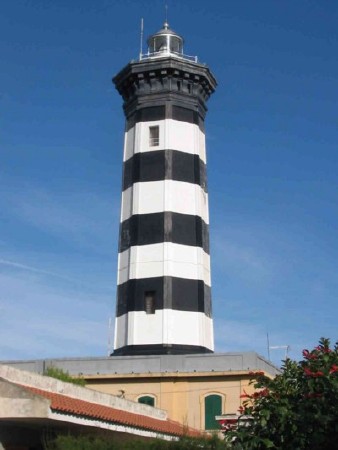
Capo Peloro Light, Messina
photo copyright Egidio Ferrighi; used by permission
